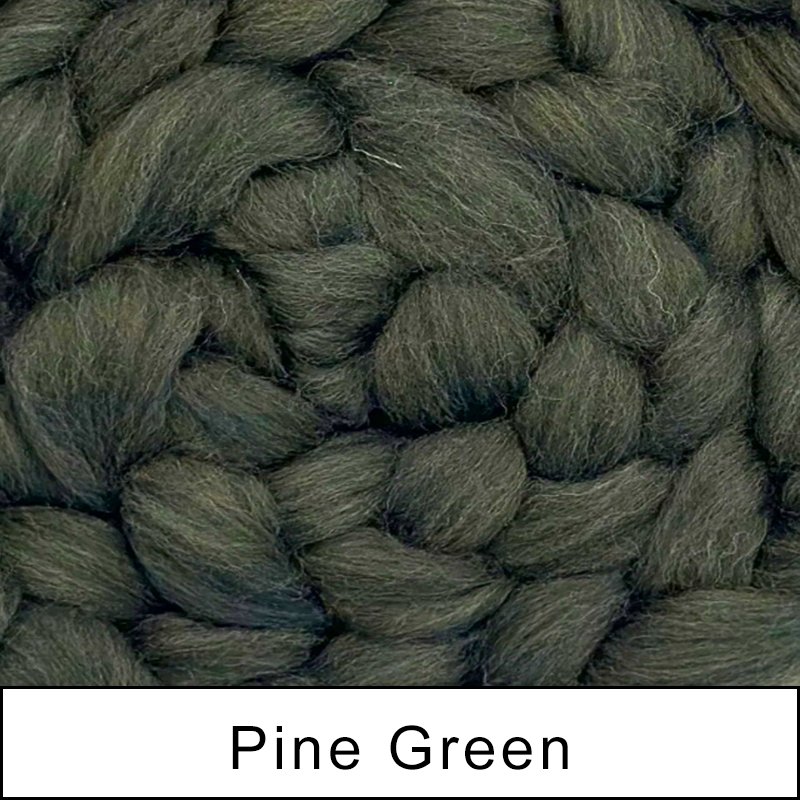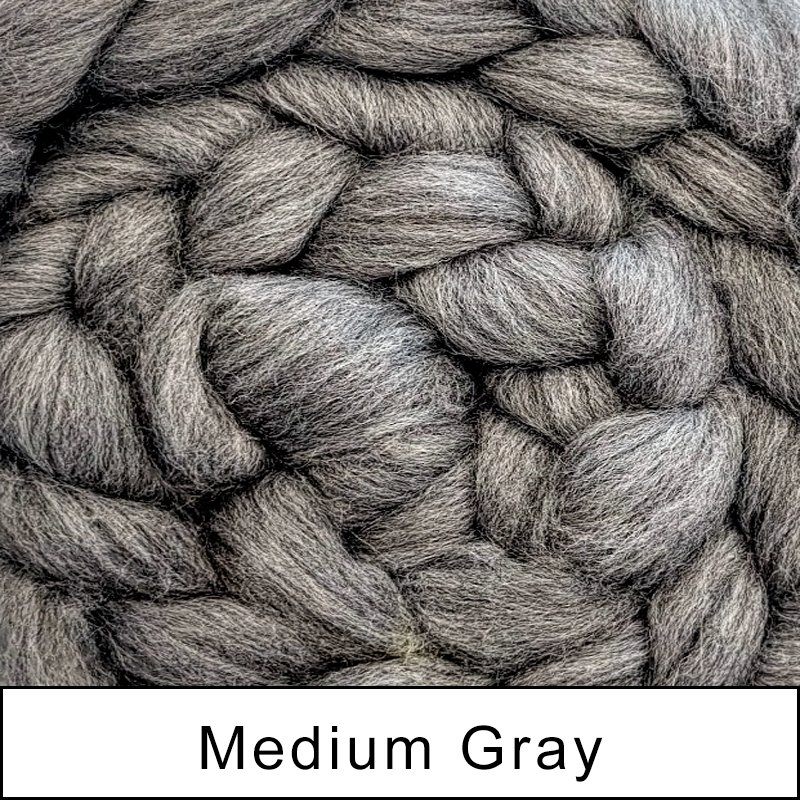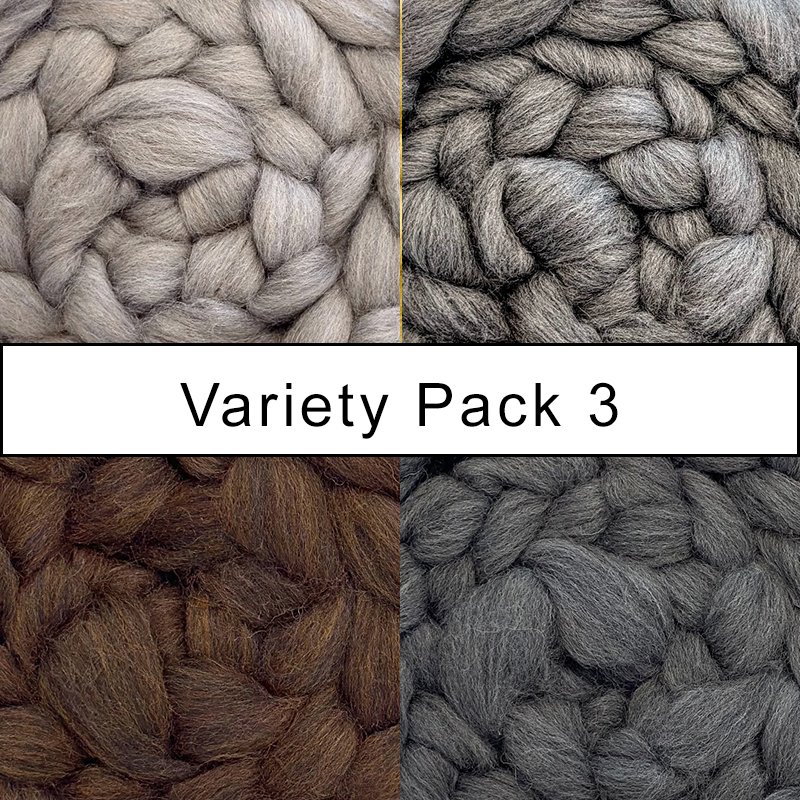Recycled Combed Wool Top















Recycled Combed Wool Top
Item: 4 oz Recycled Combed Wool Top Roving, 26-29 micron.
Variety Packs are 1 ounce of each of 4 colors as follows:
Variety Pack 1 = Yellow, Orange, Pink, Red
Variety Pack 2 = Green, Yellow, Red, Blue
Variety Pack 3 = Light Gray, Medium Gray, Dark Gray, Brown
This heathered, recycled wool roving is eco-friendly and sustainable! It can be used for needle felting, spinning, weaving, tapestries, art batts, and other craft and fiber art projects.
However, it can be a bit tricky for wet felting, depending on your methods, but if you’d like to give it a try, I’ve written some helpful tips at the bottom of the page.
Contents: 90% Wool, 10% Other. (Due to the nature of recycling wool, a small percentage of other recycled fibers may be present.)
Staple Length: 75-90mm
4 oz = approximately 5+ yards in length
*Please keep in mind that colors may vary, depending on your monitor or mobile device. I do my best to represent colors as accurately as possible by using color calibration software. Even so, there still could be a variation.
Here are some tips for wet felting this wool, particularly if you’re not familiar working with coarse wools. If you prefer working quickly, this is probably not the wool for you. If you like a good challenge or to experiment, then please read on!
What I describe below may be similar to how you already felt. Since we all work differently and are at various levels, I felt the need to share my findings, because if you’re willing to try, I want you to succeed.
I found this wool to be sturdy and hold a shape well for 3D wet felting, but does require some patience.
Because we can’t know the specific breeds of wool or types of included fibers, we have to expect a level of unpredictability. Before starting a project, I highly recommend making a sample to familiarize yourself with its qualities, and how it responds to your methods. (I know samples can be a drag, but I bet you’ll thank me later!) 😉
If you’ve read this far and are still on board, here are best practices that I think will work for everyone…
Start with room temperature water/felting solution to slow down the tangling process. Hot water is fine for fulling, but you want to work very slowly up until that point, and water temp is key.
Thin layers tangle easier and will have a better finish in the end. Thick layers may become lumpy.
For 3D work, I recommend a vertical/horizontal layout for sturdiness. If you’re making slippers and need some stretch, then a diagonal layout should probably work. I haven’t personally tried it with this wool, but I think if your layers are thin, it should be okay. (Make that sample first and then let me know how it goes!)
I do not recommend combining vertical/horizontal layers with diagonal layers. Someone tried it and it didn’t go well.
For thick 3D projects, I recommend laying out your first horizontal and vertical layer, and then rubbing a light skin before flipping and moving on to the next set, and repeating this process throughout. This will help the interior layers get a head start, and eliminate having to turn a 3D project inside out.
I recommend more controlled fulling for a smoother finish. By that I mean rolling (in bubble wrap and on itself), and dropping flat or while folded or rolled up, as preferable to tossing/throwing randomly.
Expect the felting process from beginning to end to take longer than it does with a finer micron wool.
Expect to rub more soap in than normal as you go along. (Mainly after the prefelt stage.) I found this wool needs a lot of extra soap throughout the process. The hardness of your water may play a role in this, so keep that in mind.
Rubbing over bubble wrap or plastic sheeting during the rubbing stage instead of tulle/mesh will probably give you less of a hairy finish and eliminate pilling. If you prefer to use tulle, use LOTS of soap and keep your hands extra soapy while rubbing. Also, lift the tulle more often than you normally would, before the fibers start migrating through the tulle.
If you find your piece to still be too hairy, you can of course shave it, but I DO NOT RECOMMEND the burning method because those mystery fibers may melt instead of burn and not look the way you expected.
That’s all I can report for now. If you have questions, wins or failures, I’d love to hear from you, so click here to get in touch and let me know your thoughts about using this wool.
